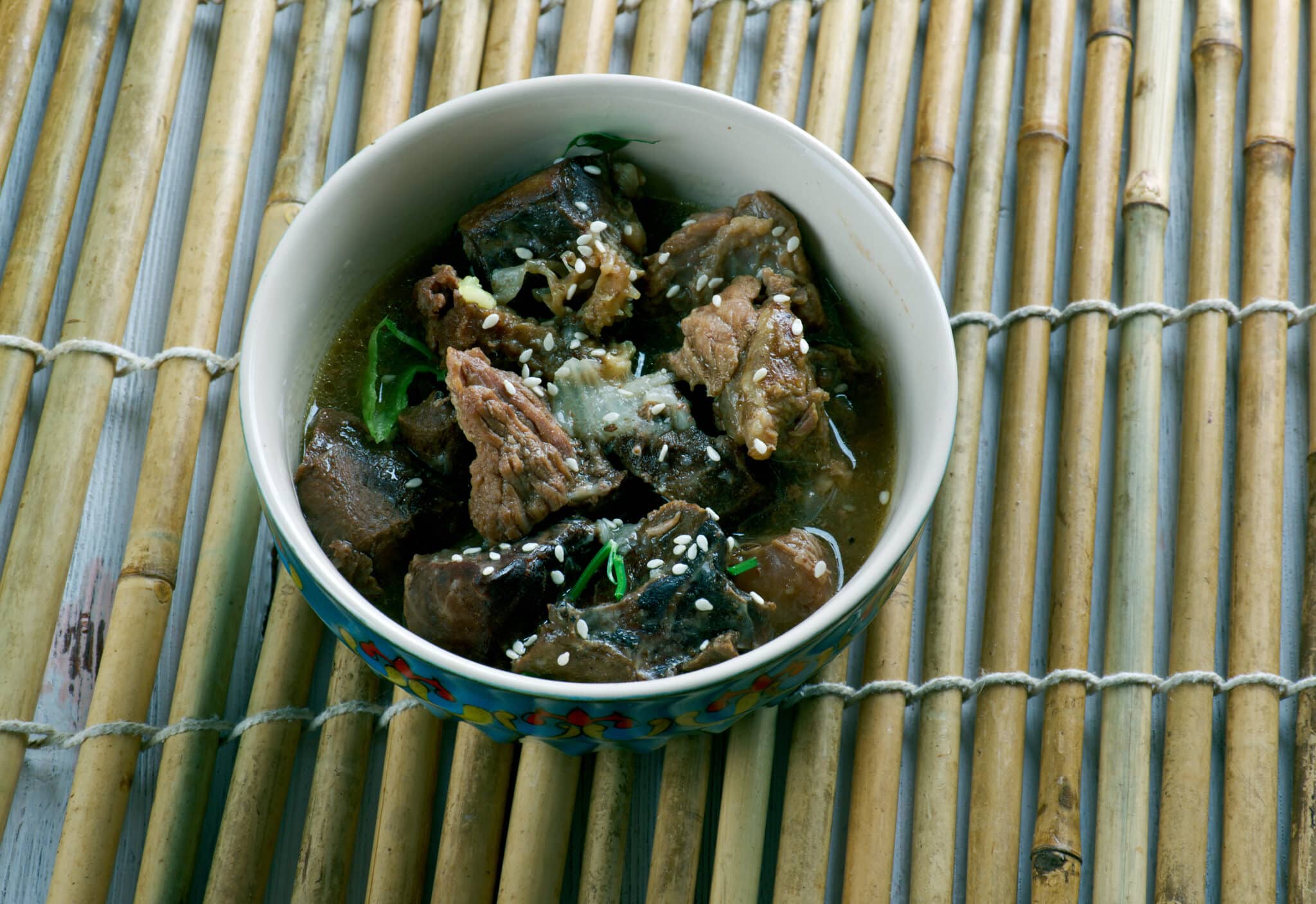
Pepperpot, Guyana’s national dish, is a true culinary gem that has withstood the test of time, infused with history and flavor. Traditionally associated with celebrations and special occasions such as Christmas and New Year’s festivities, this stew has endured as a culinary tradition deeply rooted in Guyana’s rich heritage.
This dish is not only cherished for its unique taste but also stands as an eloquent symbol of Guyana’s cultural diversity. It embodies the African, Indigenous, European, and Asian influences that have woven the cultural tapestry of this nation. Would you like to discover more about this fascinating dish? Below, we’ll tell you all about it.
Our Remitly team has created this guide as part of our series celebrating the cuisine of our customers from around the world.
The History of Pepperpot
Pepperpot’s roots trace back to the indigenous Amerindian people of Guyana. While looking for methods to preserve meat without refrigeration, they created this hearty meal. The secret? Cassareep – a thick black sauce made from cassava root.
With the arrival of European colonizers, especially the Dutch and the British, a fusion of indigenous techniques and flavors with those introduced by the Europeans took place. Over the centuries, the dish has evolved, influenced by the diverse cultures that have inhabited Guyana, and all the Caribbean.
African slaves, European colonizers, and migrant workers from India have all left their mark on this iconic dish. Today, it has become a symbol of unity and shared history in this multicultural nation.
Ingredients and Cooking Process
The star ingredient in pepperpot is meat – typically beef, pork, or mutton. Some versions even include wild game like deer or labba (a local rodent) or fish. The meat is slow-cooked until tender in a savory broth flavored with cassareep.
Other key ingredients include hot peppers for heat and spices like cinnamon and cloves for warmth and depth. Aromatic herbs such as thyme and basil add freshness, while brown sugar lends a subtle sweetness that balances the flavors beautifully.
Cooking pepperpot is an exercise in patience. It involves slow-cooking the meat for hours until it becomes melt-in-your-mouth tender. This long cooking process allows the flavors to meld together, creating a complex yet harmonious taste profile.
Firstly, the meat is marinated with cassareep and spices overnight. Then it’s slowly simmered with aromatic herbs until it reaches the desired tenderness. Finally, hot peppers are added for that signature kick, making pepperpot an irresistible treat for spice lovers.
A Simple Pepperpot Recipe
Pepperpot is a dish that requires patience and love. Here’s a simplified recipe that you can try at home.
Ingredients:
- 2 lbs of mixed meat (beef, pork, mutton)
- 1 cup of cassareep
- 2 hot peppers
- 3 cloves of garlic, minced
- 1 large onion, chopped
- 1 cinnamon stick
- 4 cloves
- Fresh thyme and basil to taste
- Salt and pepper to taste
- Brown sugar to taste
Instructions:
- Cut the meat into chunks and marinate it with cassareep, garlic, onion, cinnamon, cloves, salt, and pepper overnight.
- The next day, transfer the marinated meat into a large pot.
- Add enough water to cover the meat.
- Bring it to a boil, then reduce the heat to low.
- Let it simmer for about three hours, or until the meat is tender.
- Add hot peppers, fresh herbs and brown sugar during the last hour of cooking.
- Adjust seasoning if necessary.
- Serve your homemade pepperpot with Guyanese bread or rice.
Remember: Pepperpot tastes better as it ages, so don’t be afraid to make a big batch!
Serving and Eating Etiquette
Pepperpot is traditionally served with dense Guyanese bread or rice for soaking up the flavorful broth. It’s often enjoyed as a breakfast dish on special occasions, but can be eaten any time of day.
When eating pepperpot, it’s customary to use your hands to tear off pieces of bread and dip them into the stew. This communal style of eating fosters a sense of camaraderie and shared enjoyment among diners.
Pepperpot is an integral part of celebrations in Guyana. It’s particularly popular during Christmas, when families gather to share this beloved dish as part of their festive feast.
It’s also served at weddings, birthdays, and other special occasions. The act of preparing and sharing pepperpot is seen as a way to honor guests and celebrate together.
Exploring Guyanese Cuisine
Guyanese cuisine is as diverse as its people – an amalgamation of Amerindian, African, Indian and European influences.
Staple Foods in Guyana
Rice is a staple food in Guyana, often served alongside curries or stews like pepperpot. Root vegetables such as cassava, yam and sweet potato are also commonly consumed.
Popular Dishes
Apart from pepperpot, other popular dishes include curry roti, an Indian inspired flatbread served with spicy curries; cook-up rice, a one-pot dish made with rice, peas, and meat; and metemgee, a hearty stew of dumplings, meat and root vegetables.
Street Food Culture
Street food is a big part of Guyanese culture. From sizzling barbecue stands to vendors selling fresh fruits and coconut water, there’s something for everyone.
Desserts and Sweets
Guyanese desserts typically feature tropical fruits, coconut, and spices. Popular sweets include black cake – a rich fruitcake made with rum; salara – a sweet bread roll filled with coconut; and sugar cake, a fudge-like treat made from sugar and grated coconut.
In conclusion, Guyanese cuisine is a flavorful journey that reflects the country’s multicultural heritage. Whether it’s the national dish pepperpot or the humble curry roti, each bite tells a story of tradition, history, and love for good food.
Visit the homepage, download our app, or check out our Help Center to get started.
